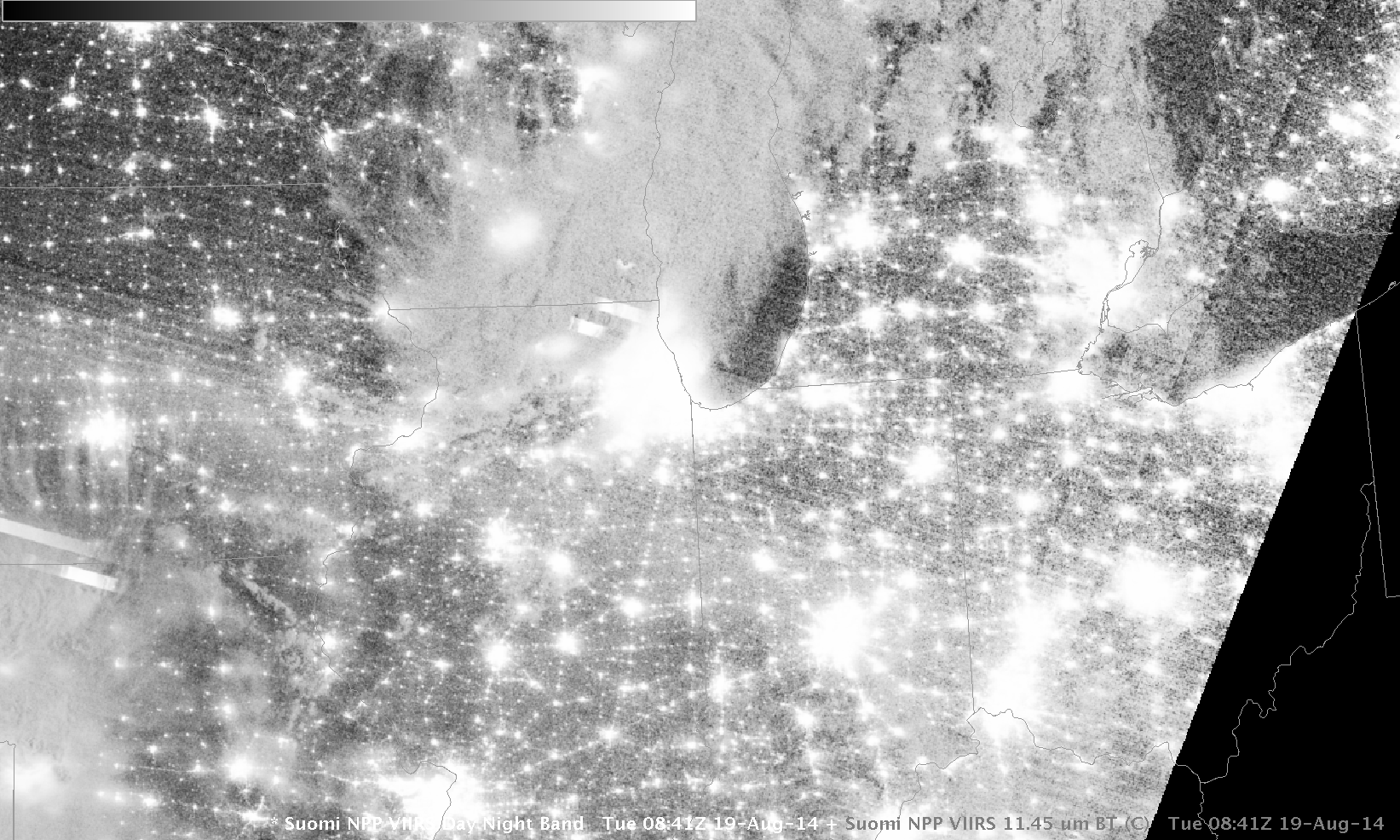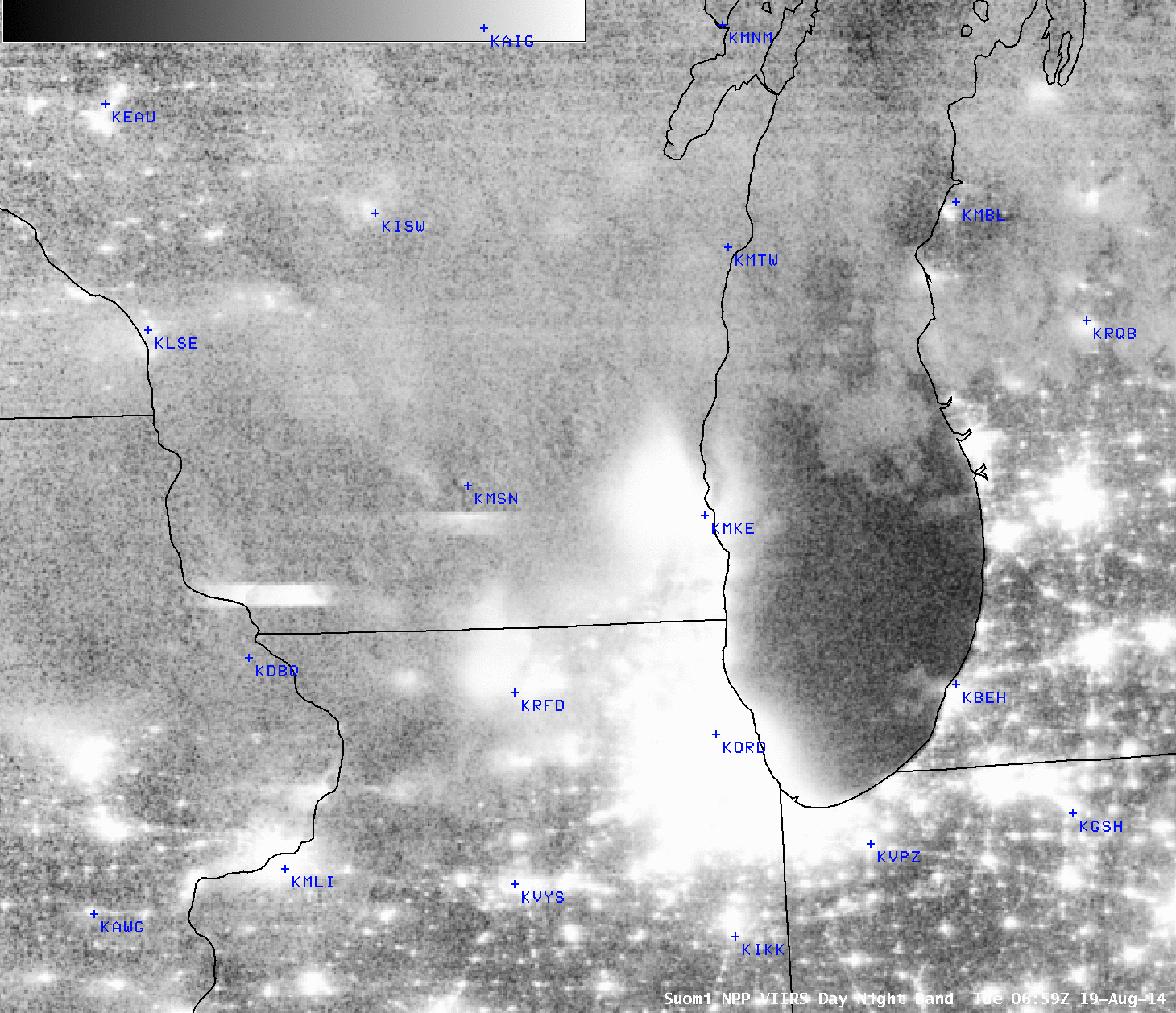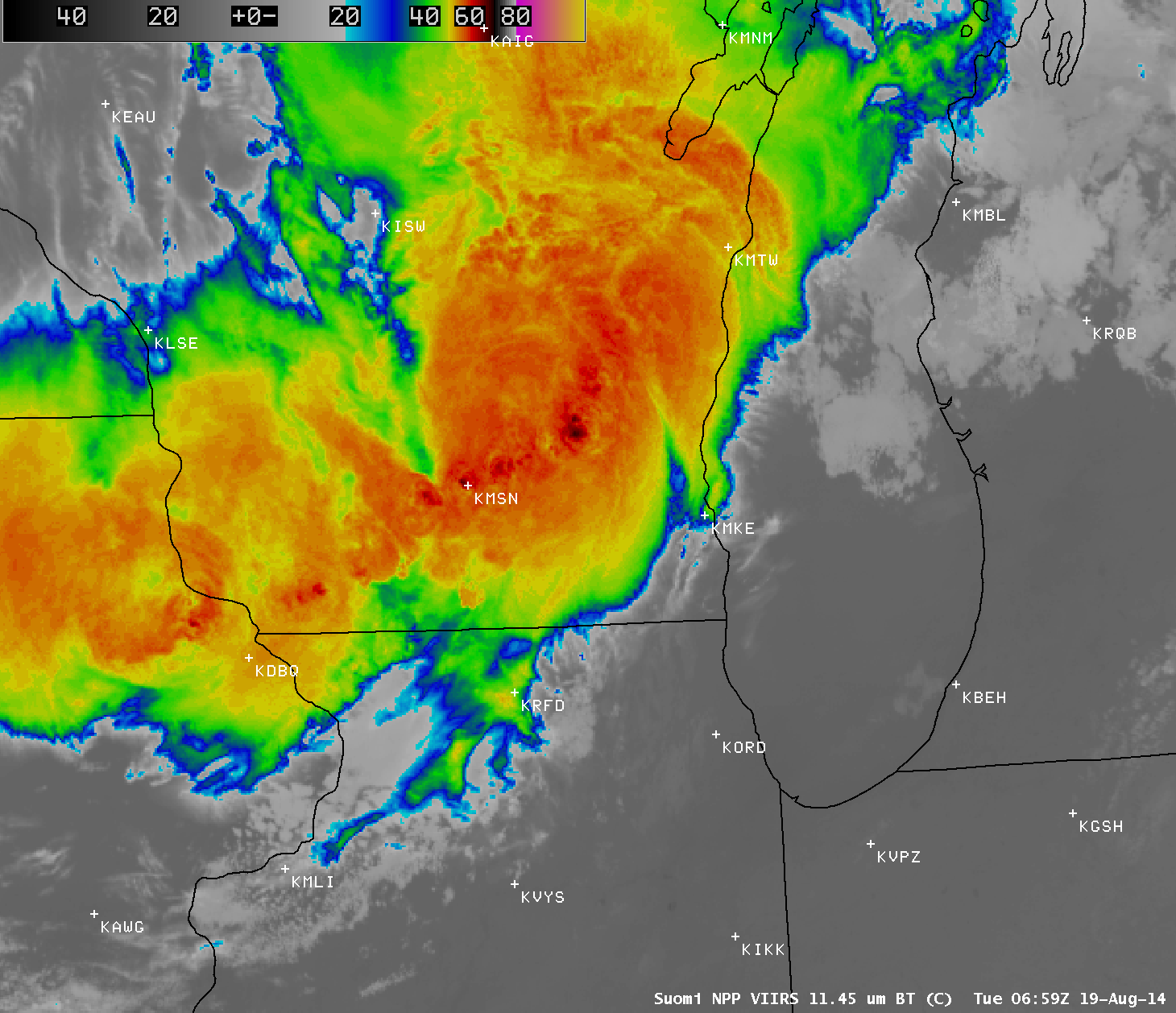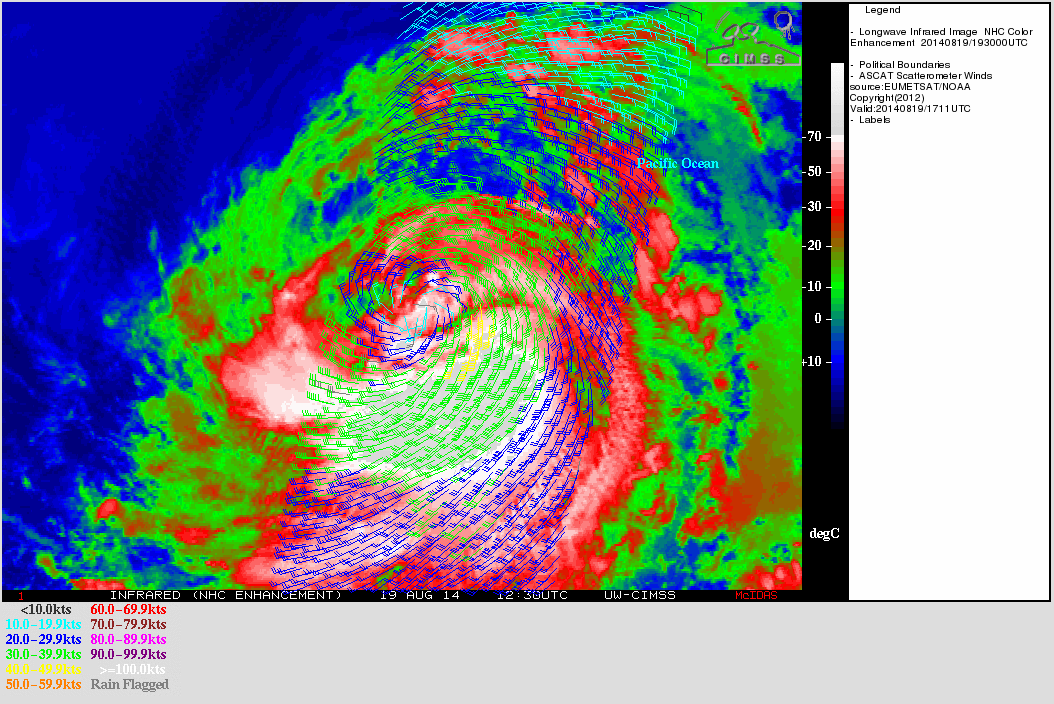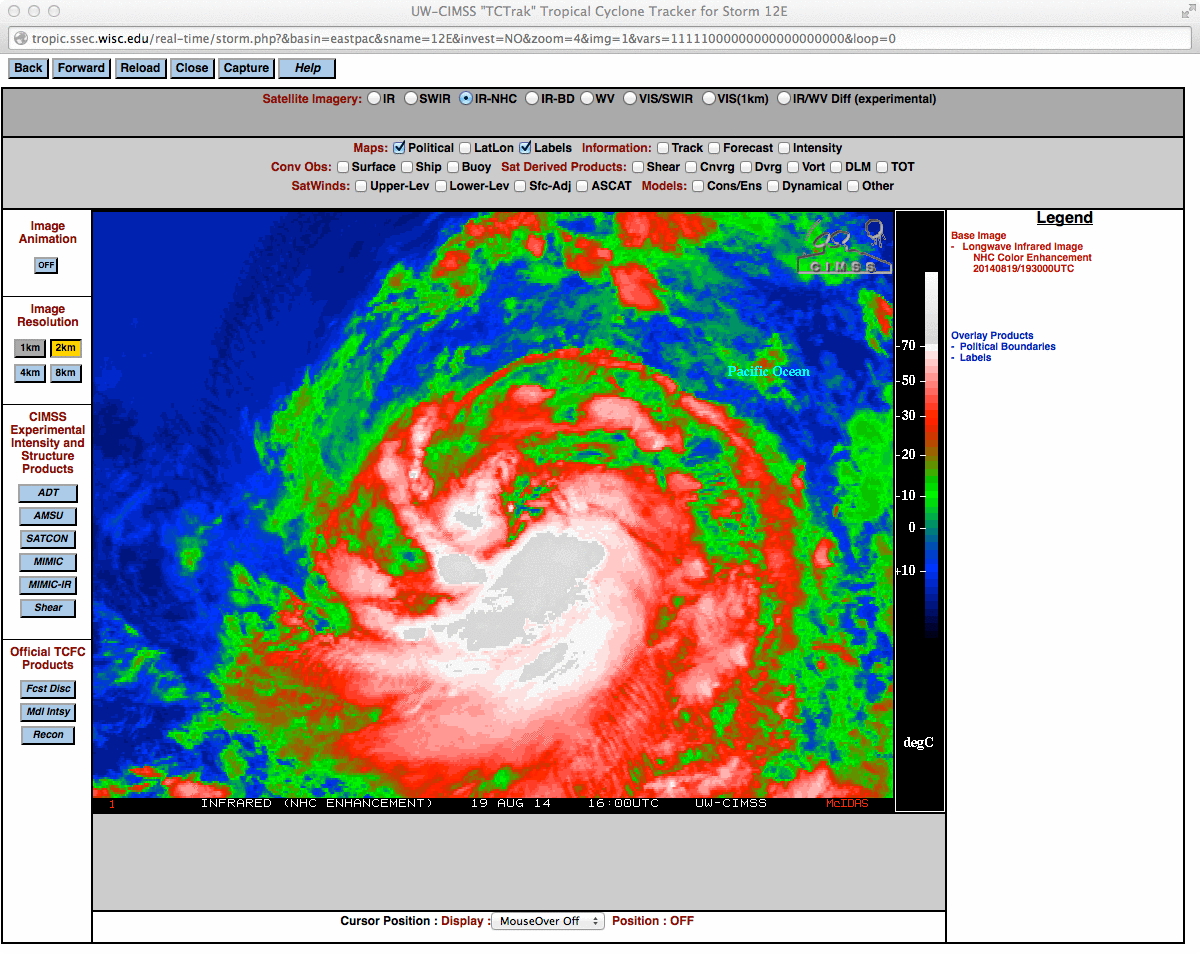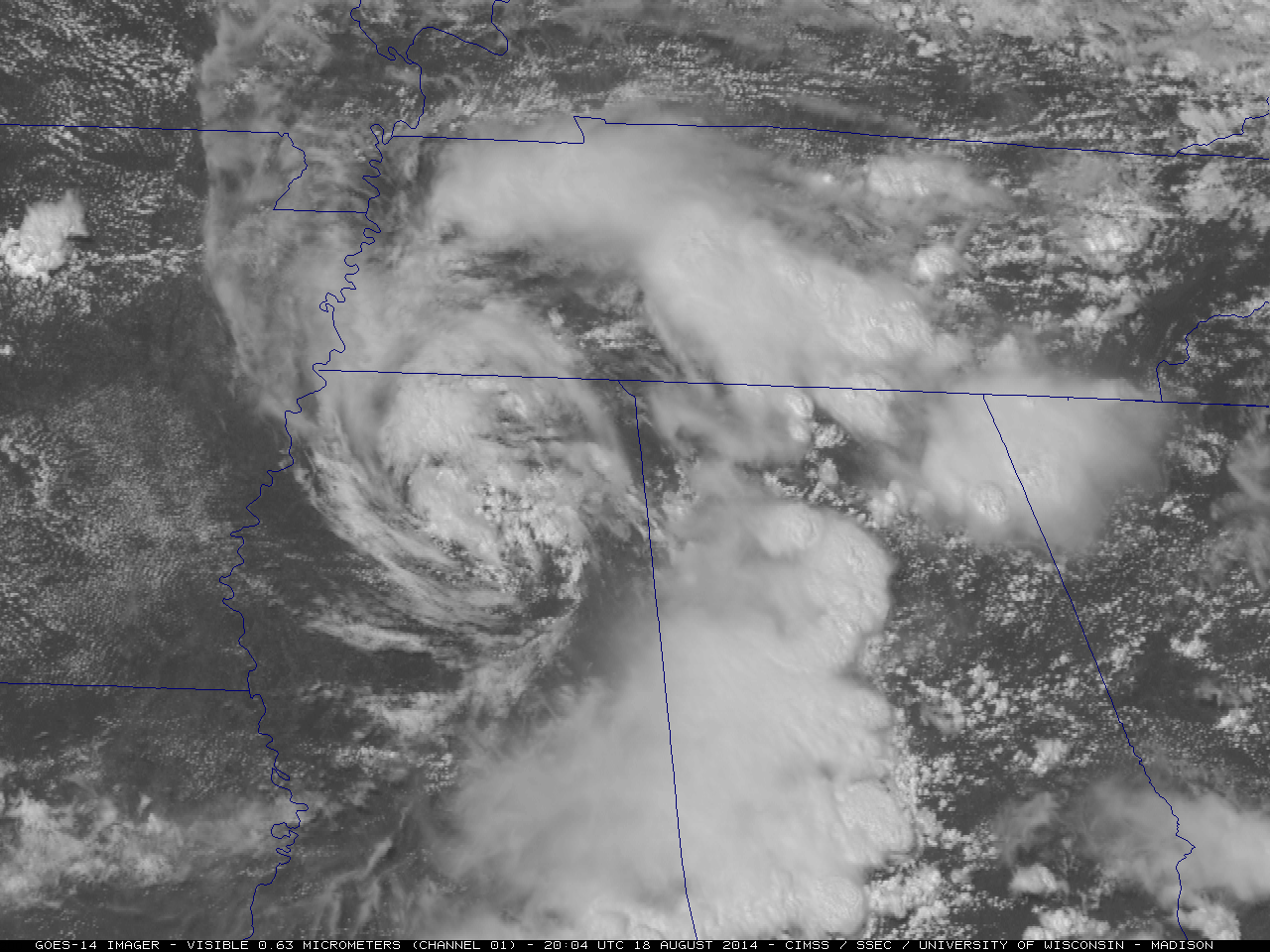GOES-14 0.63 µm visible channel images, at 15 vs 5 vs 1-minute intervals (click to play Animated GIF)
The GOES-14 satellite was in Super Rapid Scan Operations for GOES-R (SRSOR) mode, providing images at 1-minute intervals over the central US on 20 August 2014; an animation of 0.63 µm visible channel images (Animated GIF | MP4 movie | YouTube) showed the dissipation of river valley fog that had formed during the previous night over the Mississippi River and adjacent portions of southwestern Wisconsin, southeastern Minnesota, and northeastern Iowa. The 3 panels show images every 15 minutes (today’s current routine schedule), every 5 minutes (available during Rapid Scan Operations), and every 1 minute (which will be available from the ABI instrument on the next-generation GOES-R satellite).
Along the Wisconsin River valley, fog restricted the surface visibility to 0.15 mile at Prairie Du Chien KPDC and Boscobel KOVS, and 0.25 mile at Lone Rock KLNR (images with map and station location overlays).
View only this post Read Less



